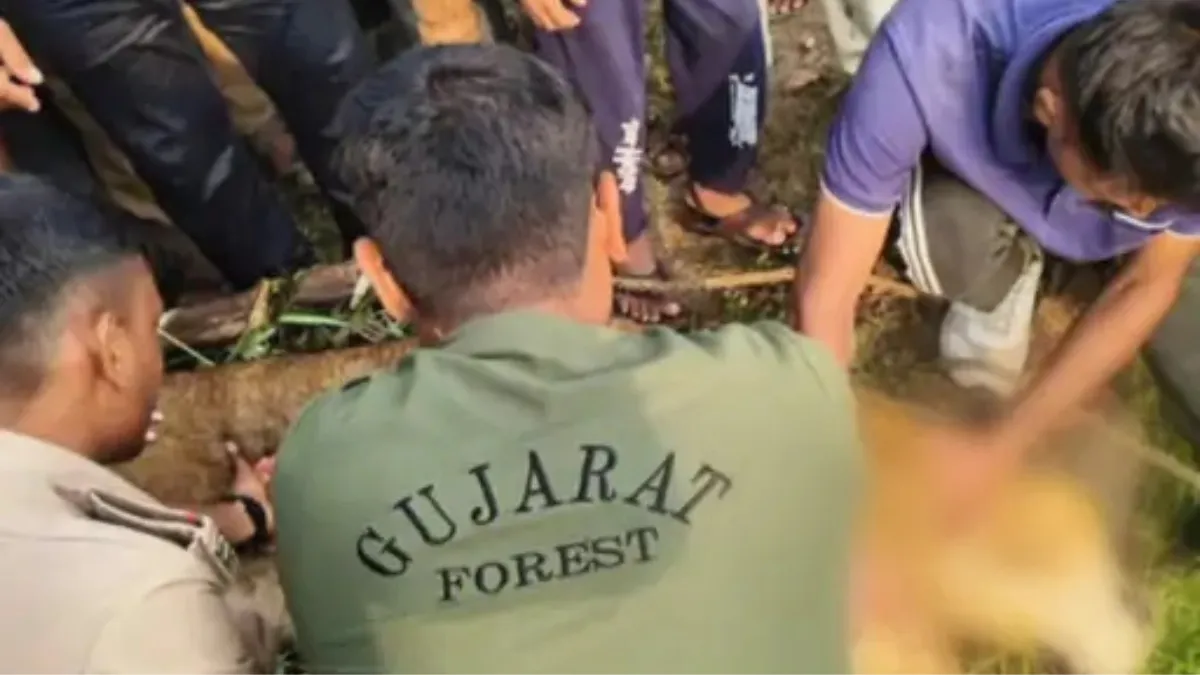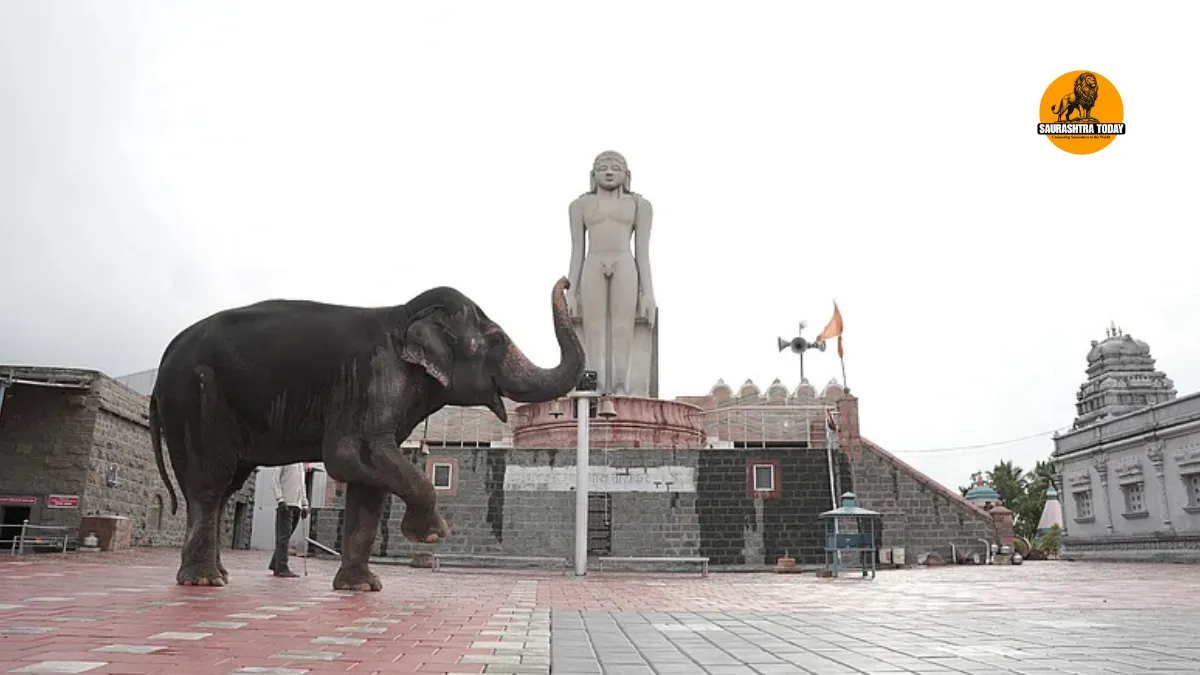A heartbreaking incident unfolded near Divasa village in Mangrol taluka, Junagadh district (Gujarat), where an Asiatic lioness tragically died after drowning in a canal, just three hours after being rescued and released back into the wild by the forest department.
This tragic event has once again brought attention to the growing challenges of wildlife conservation and the dangers faced by Asiatic lions living close to human settlements.
Rescue Operation in the Early Morning
According to officials from the Mangrol Forest Division, the incident began early in the morning around 5:00 a.m., when villagers in Divasa were startled to find a lioness wandering into a residential area. The animal had reportedly entered the verandah of a house, causing panic among residents.
The village sarpanch immediately informed the forest department, and within minutes, a rescue team led by officer Gulabbben Suhagiya reached the site. The team broke open the door of the house and successfully tranquilized and rescued the lioness without harm.
After a brief medical check, the lioness was safely released towards the nearby forest area, approximately a few kilometres from the village. The operation seemed successful, and the lioness appeared to have returned safely to her natural habitat.
Lioness Found Trapped in Canal Three Hours Later
However, tragedy struck just three hours later. Around 8:00 a.m., the forest department received another distress message — a lioness was seen stuck in a canal about five to six kilometres away from Divasa village.
Forest officials rushed to the location, only to find the same lioness struggling in the water. Due to the thick vegetation and overgrown weeds in the canal, her legs got entangled, preventing her from climbing out.
Despite immediate rescue efforts, the lioness was unable to free herself. According to the forest team, she inhaled water during her struggle, leading to her tragic death inside the canal. The lioness was believed to be around three to five years old.
Officials Explain Cause of Death
Preliminary reports suggest that the lioness’s hind legs became trapped in underwater grass and creepers, causing her to lose balance. She eventually fell face-down and drowned.
The forest department officials have confirmed that her body was retrieved from the canal and transported to the Amrapur Care Centre for a panel post-mortem (PM). Samples, including viscera, have been sent to the Forensic Science Laboratory (FSL) for further examination to confirm the exact cause of death.
Wildlife Experts Raise Concerns
This unfortunate incident has once again raised questions about the safety of Asiatic lions in the Gir region — the only natural habitat left for this endangered species. Experts have pointed out that human expansion, open canals, and unfenced water channels continue to pose serious threats to these majestic big cats.
While Gir National Park and its surrounding forest zones have seen a rise in the lion population in recent years, their movement into agricultural lands and nearby villages has also increased. The overlap between human habitation and lion territory often leads to conflicts, accidents, and fatalities like the one seen in Mangrol.
Conservationists stress that improving canal safety measures, such as building escape ramps or fencing along high-risk stretches, could help prevent similar tragedies in the future.
Asiatic Lion: Pride of Gujarat, Struggle for Survival
The Asiatic lion (Panthera leo persica) is a subspecies of lion found only in India, primarily in the Gir landscape of Gujarat. Once roaming across the Middle East and northern India, this royal predator is now confined to a small pocket in western India.
Thanks to strong conservation efforts, the population has grown from just about 180 lions in the 1970s to over 670 individuals today. However, incidents like this remind us how fragile their survival still is.
As the Asiatic lion population expands, they are forced to move beyond protected areas in search of territory and prey. This increases their exposure to canals, wells, roads, and human settlements, often leading to tragic consequences.
Also read: Lion Safari Park Rajkot: What Will Be the Ticket Price and When Will It Open?
Forest Department Launches Investigation
The forest department has launched a detailed investigation to determine whether the canal’s design or maintenance contributed to the lioness’s death. A technical team is also reviewing rescue and release protocols to ensure that future operations consider the animal’s stress levels and post-rescue movements.
Authorities have assured that every necessary step will be taken to prevent such losses in the future, emphasizing that each Asiatic lion plays a vital role in maintaining ecological balance.
Public Awareness and Responsibility
Wildlife officials have appealed to villagers and farmers living near forest zones to immediately report any sightings of lions or other wild animals instead of taking direct action. Rapid communication between locals and forest teams often determines the success of rescue operations.
They also highlighted the need for community participation in wildlife protection, particularly in regions where lions frequently wander into human areas.
Also read: Lion Safari Park Rajkot: Gujarat’s Next Major Wildlife Destination Set to Open by April 2026
Conclusion
The death of the Asiatic lioness in Mangrol’s canal is not just an isolated accident — it symbolizes the ongoing tension between nature and development. While conservation programs have successfully revived the population of these majestic creatures, the challenges of coexistence are becoming increasingly visible.
This incident serves as a painful reminder that protecting the Asiatic lion requires more than just rescue missions — it demands stronger infrastructure, safer landscapes, and collective human responsibility to ensure that these symbols of India’s wildlife heritage continue to thrive in the wild.


















